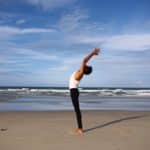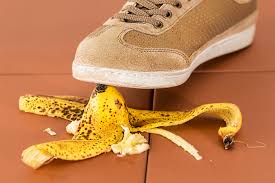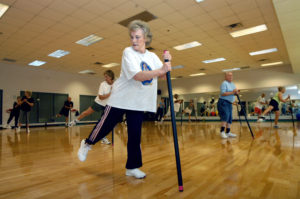Balance As A Vital Sign
Our annual doctor’s check-up is comprehensive – blood pressure, weight, cholesterol levels – are often measured to determine your health profile. But how is your balance measured? Your ability to maintain balance under various situations should also be considered in your health profile. Unfortunately, one out of three older people falls each year, but less than half tell their doctor. Falls can diminish your ability to lead an active and independent life. Research has identified many conditions that contribute to falling. These are called risk factors. The more risk factors you have, the greater your risk. Fall risk is multifactorial but individualized to each older adult. Lets take a look at contributing factors you can change, factors you cannot change, and how a Physical Therapist can improve your Independence Profile. Let’s turn your balance problem into a balance opportunity, so you can maintain the highest quality of life as you age.

How You Can Address Your Independence Profile
To promote independence and maintain an active lifestyle, we must outline opportunities for improvement to your Independence Profile. The risk factors include:
- Leg muscle weakness: Do you find it more difficult to climb a flight of stairs or rise from a chair? Does knee or hip arthritis limit your strength? An individualized strengthening program may be right for you.
- Difficulty with balance or walking: Most aging adults are resistant to change, and this risk factor is best identified by others. If you notice a loved one staggering or catching themselves – even just once – it’s likely they have trouble when you’re not around.
- Vision problems: Conditions such as cataracts, macular degeneration, or wearing bifocals make navigation, especially in the dark, more difficult.
- A fear: Many people who fall, even if they’re not injured, become afraid of falling. This fear may cause a person to cut down on their everyday activities. If a person is less active, they become weaker and this increases their chances of falling.
- Vitamin D deficiency: Ask your primary care specialist if your vitamin D levels are within a normal range for your age.
- Polypharmacy: If you take more than 4 medications at the same time or take psychoactive medications (such as sedatives or antidepressants). Ask your prescribing doctor what steps you can take to decrease reliance on these medications.
- Home hazards: Most balance issues occur while doing ordinary tasks within the home – getting out of the bath, turning a corner, etc. Heather Lane offers a full home risk evaluation for recommendations on how to improve safety within the home. For instance, a bathtub without handrails can make bathing unsafe. Contact Dr. Donovan for more information.
- Low blood pressure: This becomes particularly hazardous if you suffer from light-headedness, dizziness, or vertigo when you change positions. This sudden drop in blood pressure is known as orthostatic hypotension, and can be modified by improving your Independence Profile.
- Dehydration: When our bodies are under hydrated, they are less adept at accommodating to blood pressure or positional changes.
- A history of falls: A recent fall is the biggest predictor for future falls. The tough truth is that each fall doubles your chances of falling again. How did your fall happen last time? Have you or a loved one made accommodations to decrease the likelihood of it happening again?

About one third of people over the age of 65 and almost half of people over the age of 80 will fall at least once this year.
Risk Factors You Cannot Change
These factors contribute to your Independence Profile. Unfortunately you cannot modify these attributes. However, appreciating their existence is an excellent step in mitigating their influence on your active lifestyle.
- Being 80 years old or older
- Parkinson’s disease, stroke, or diabetes: These medical conditions have musculoskeletal components than can limit your ability to get around.
- Conditions that cause confusion, such as dementia and Alzheimer’s disease
Risk Factors Your Physical Therapist Can Identify
If you are worried about falling or if you recently had a fall, your physical therapist can conduct a fall prevention screen. If the screening shows that you are at risk, the therapist may perform a more thorough evaluation. Following this evaluation, he or she will design a customized movement and training program to address your balance and strength issues. This may include:
- Balance Training
- Walking and Mobility Improvement
- Learning to Multitask Safely
- Pain Relief
- Strength Training
- Aerobic Training
- Education
- Fear Management
People are living longer and balance optimization is key to maintaining an active life. At Heather Lane, we make a serious commitment to turn your balance issues into balance opportunities. Our Independence Profile is suited for older adults: in-home hazard identification, fall risk screening, and custom wellbeing packages to meet your needs. Call Dr. Donovan for a free consultation on what balance programs you may need. We want you to reach your goals and keep you active for a lifetime.

Will A Cane Or Walker Help?
Canes and walkers help people with pain, weakness, and balance problems walk more safely and comfortably. They also may help some people avoid falls. Always be weary of the pre-requisites of a fall – staggering, furniture walking, slow walking speed. There are many different types of canes, walkers, and other assistive devices available, so it’s very important to do your homework.
- Work with your healthcare provider (physical therapist, doctor, nurse) to choose the correct type of walking aid for you
- Have the cane or walker sized so it fits you correctly
- Get help learning how to use it the right way
CITATION
Renfro M, Fehrer S. Multifactorial screening for fall risk in community-dwelling older adults in the primary care office: development of the fall risk assessment & screening tool. J Geriatr Phys Ther. 2011;34(4):174–83.
The information provided on this site is intended for your general knowledge only and is not a substitute for professional medical advice or treatment for specific medical conditions. You should not use this information to diagnose or treat a health problem or disease without consulting with Heather Lane Physical Therapy or another qualified healthcare provider.

